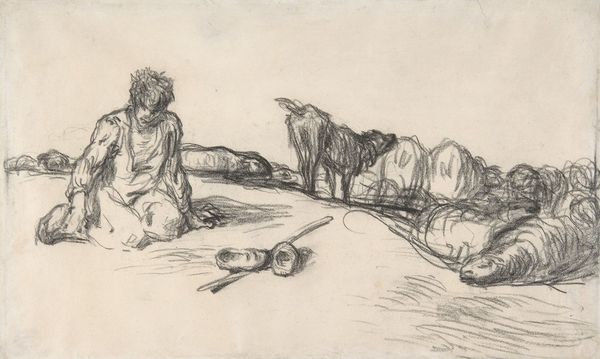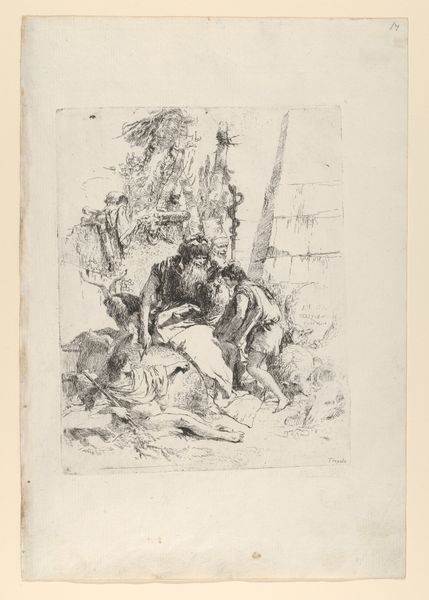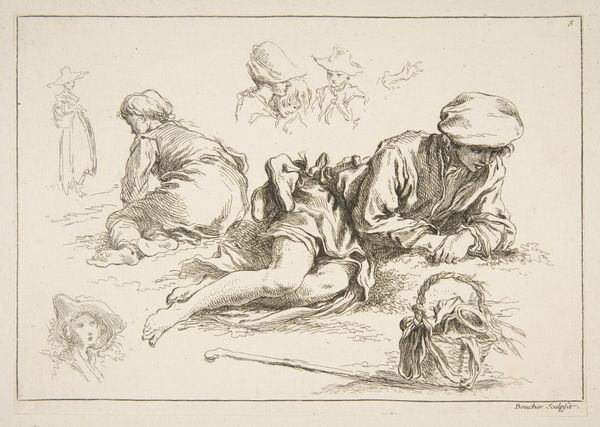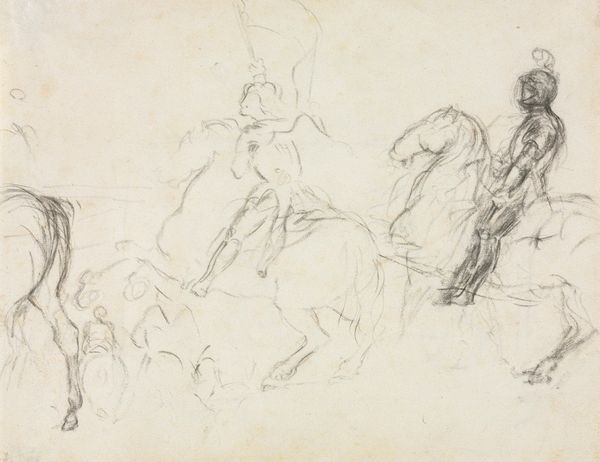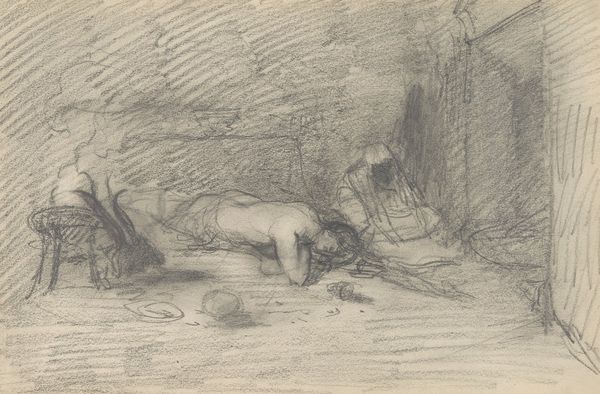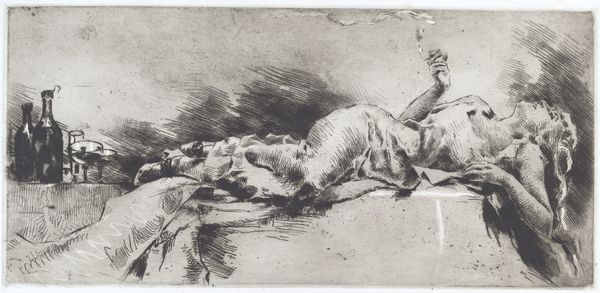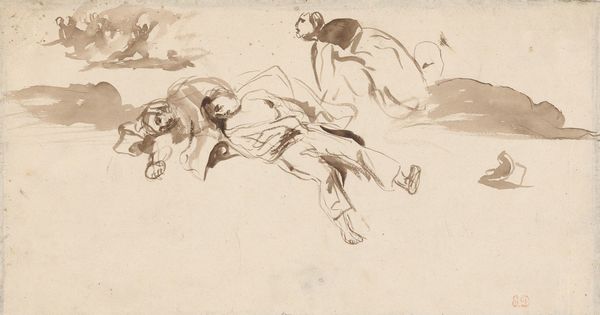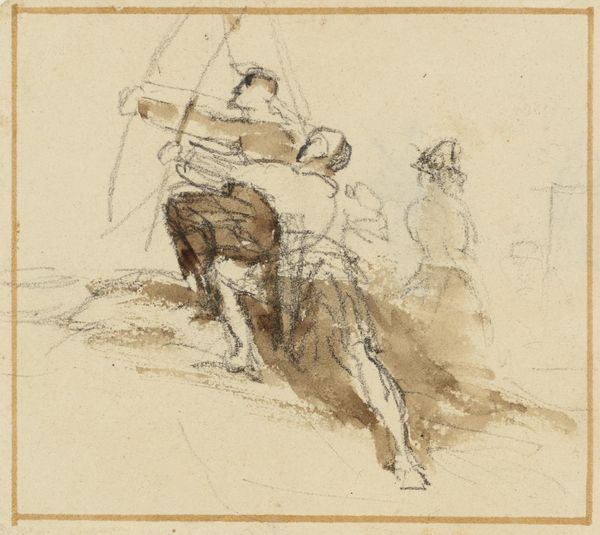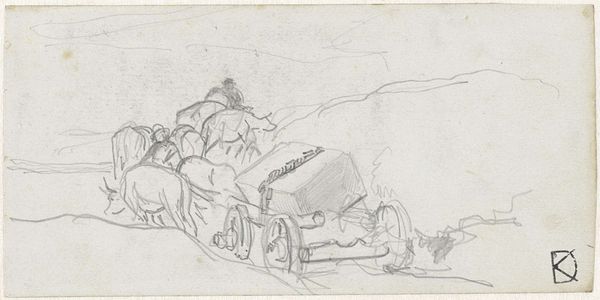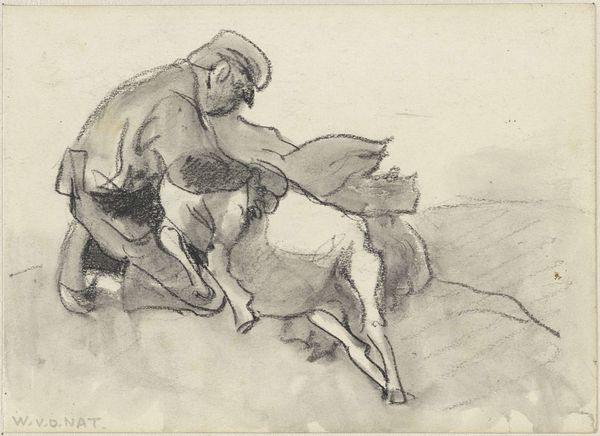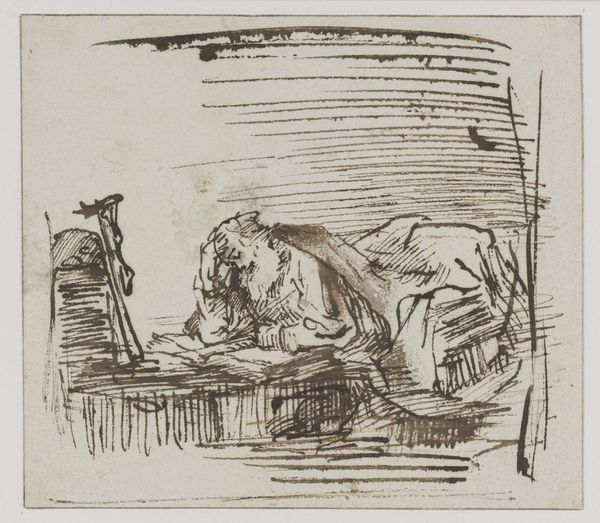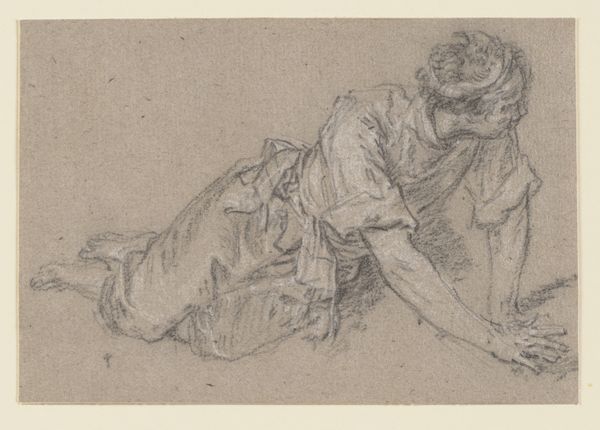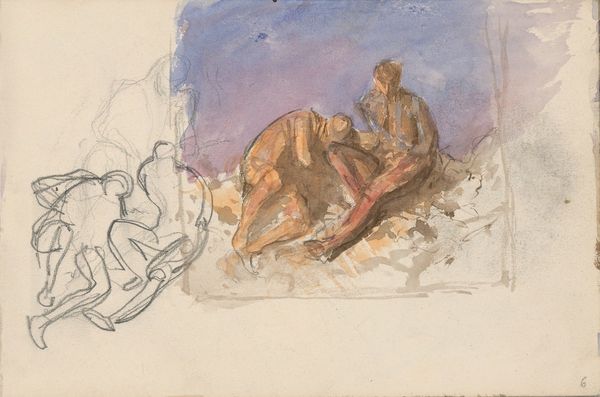
Dimensions: support: 343 x 489 mm
Copyright: CC-BY-NC-ND 4.0 DEED, Photo: Tate
Editor: So, this is George Romney’s ink drawing, "John Howard Visiting a Lazaretto". It's striking how stark and vulnerable the figures appear. What narratives do you think Romney is trying to explore here? Curator: Romney offers a glimpse into 18th-century social reform. John Howard was a pioneering prison reformer. This sketch captures the historical context of disease and incarceration. The figures embody suffering, and Howard represents an intervention in those systems of power. Editor: So, it's about power and social structures? Curator: Exactly. This drawing reveals the artist’s social awareness during a period of immense social change, critiquing the treatment of the marginalized. Editor: That gives me a lot to consider about the relationship between art and activism. Curator: Indeed. It shows how art can illuminate injustices and prompt critical reflection.
Comments
tate 6 months ago
⋮
http://www.tate.org.uk/art/artworks/romney-john-howard-visiting-a-lazaretto-t03547
Join the conversation
Join millions of artists and users on Artera today and experience the ultimate creative platform.
tate 6 months ago
⋮
From 1773 onwards John Howard (1726-90) devoted himself to inspecting prisons and plague hospitals (lazarettos) throughout Britain and Europe. He campaigned tirelessly for the humane treatment of their inmates. His book 'The State of the Prisons' appeared in 1777, published by the radical Joseph Johnson who later on published Wollstonecraft (nos.20,23), and employed Blake (nos.23,25). Howard's progressive views were one sign of the growing pressure for social reform which culminated in the French Revolution of 1789. Romney set out to celebrate Howard's heroism in a large picture, but some of the reformer's concerns and descriptions of gaol conditions find a distinct echo in Blake's work (nos.2,8m,o). Gallery label, July 1994
